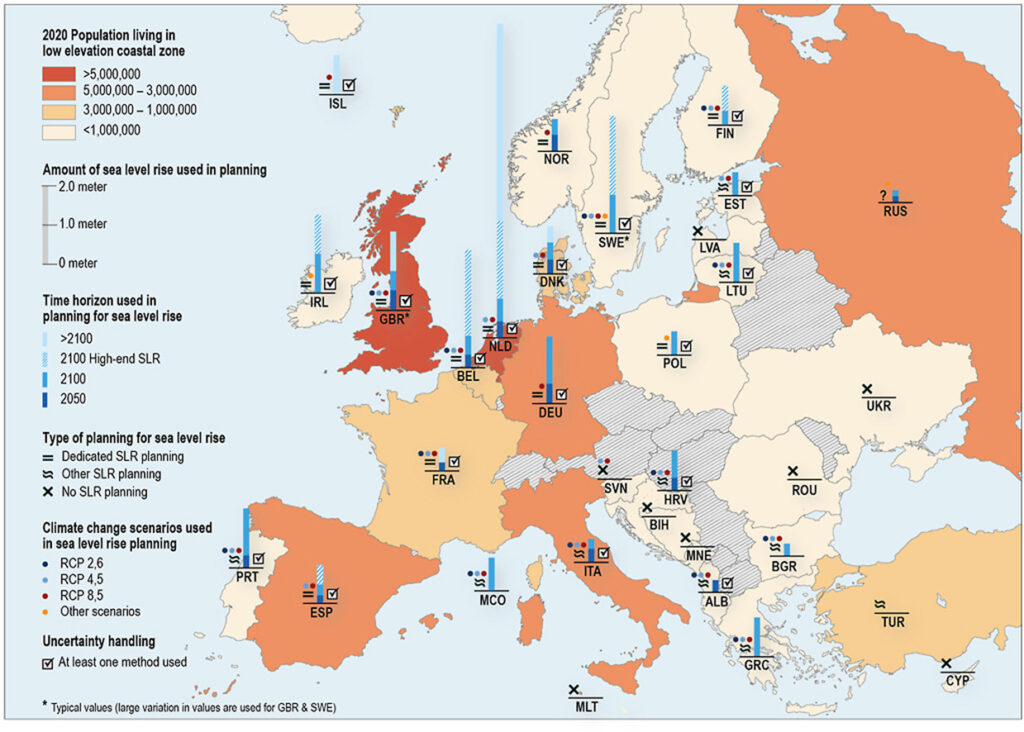ABSTRACT
Sea level rise (SLR) is projected to have severe consequences for people and assets in European coastal areas. Planning for SLR is a critical step to ensure timely and adequate responses. Despite our rapidly increasing understanding of SLR impacts and the need to adapt, few studies have looked at how countries are planning for SLR. We surveyed experts from the 32 European countries with a coastline about how their country is planning for SLR. Our online survey focused on four areas: (1) whether SLR planning exists and at what level of government; (2) which climate information and scenarios are used in planning; (3) what planning horizons and corresponding levels of SLR are used; and (4) how uncertainty in handled and whether high-end sea level rise is being considered in planning. Additionally, we asked experts to assess the status of sea level rise planning in their country. Our results indicate that most coastal countries in Europe are planning for SLR, but 25% still do not. We find that the planning horizon 2100 is most common and many countries are considering around 1m (adjusted for local conditions) of SLR at that point in time. However, there are significant differences between countries, which may lead to unequal impacts, over time. We also find that RCP4.5 and RCP8.5 are the most widely used climate change scenarios, suggesting that countries are considering high-end climate change in planning, although this does not mean they consider high amounts of SLR. Important questions remain about how planning is realized into levels of protection or preparedness and whether the amounts of SLR and planning horizons currently in use will lead countries to act in time. Go to article
HIGHLIGHTS
- Most countries are planning for sea level rise but differ in how and how much.
- 2100 is the most common planning horizon, with sea level rise varying from 0 to 3m.
- RCP8.5 and RCP4.5 are the most used scenarios informing planning.
- High end sea level rise is considered by roughly half of countries, but levels vary.
- Differences in preparation may lead to unequal impacts across Europe.
GRAPHICAL ABSTRACT

McEvoy, S., Haasnoot, M., & Biesbroek, R. (2021). How are European countries planning for sea level rise?. Ocean & Coastal Management, 203, 105512.
